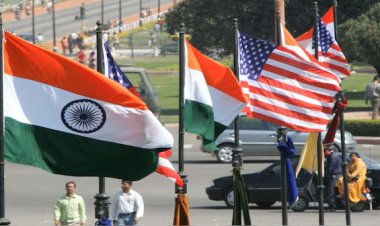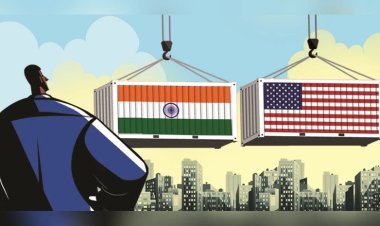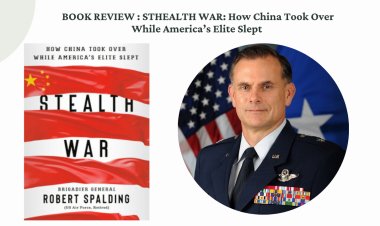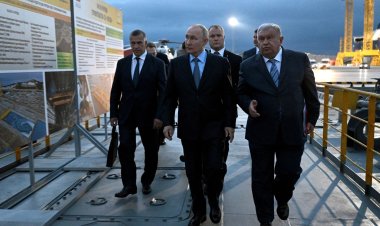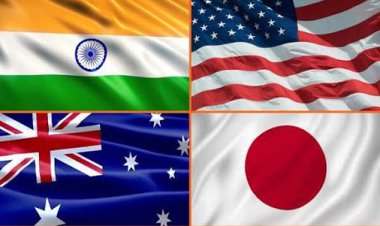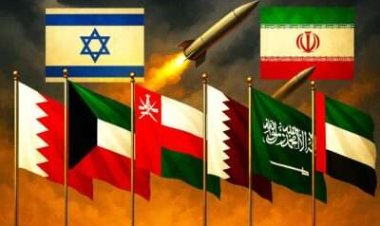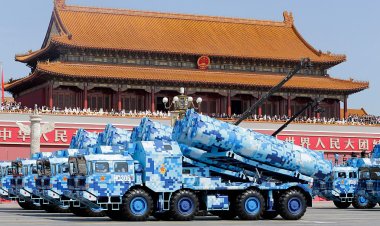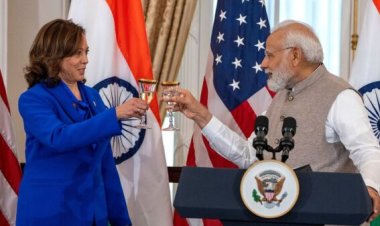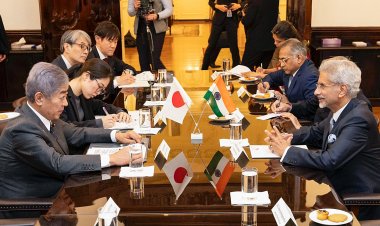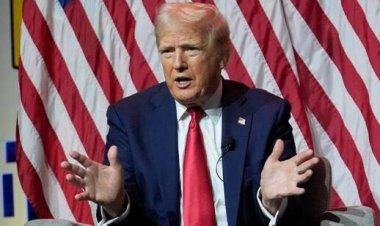From decoupling to rapprochement
Phase One of Sino- American Trade Deal
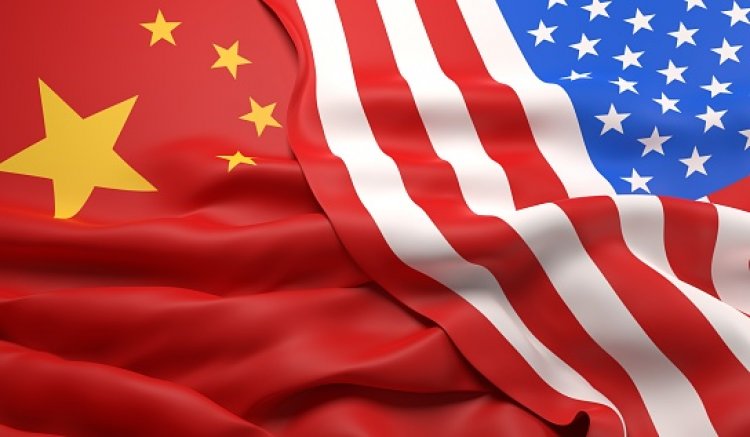
Long-form Analysis
By Monika Sethuraman
Beneath the veils of a highly intensified two-year-long trade spat between the two major economic powerhouses of the world, The United States of America and China, is a disguised form of power struggle, economic protectionism, desire to sustain hegemony, and quest for global dominance. As scholars grabble out between offensive realism, power transition theory, peaceful accommodation, partial accommodation, war, change in the international order, and Thucydides trap, there is a need to re-examine various International relations theories in the context of the detente reached by the United States and China through Phase one of the trade deal.
As the United States Trade Representatives rejoice over the partial success of China’s agreement and commitment to abide by Phase One of the Trade Deal, Asian markets closed on August 25, 2020, at a two-year new high. (Eric Beech 2020) For decades, Washington pursued a policy of ‘Kantian Tripod’ that global stability can only be achieved with a combination of democracy, globalization, and liberal international institutions. Since the post-cold war world, the USA enjoyed a unipolar momentum and does not wish to see its established status quo shaken by a rising China in the future. The trade fall-out between the United States and China since 2018, although an outcome of US’s populist politics and domestic politicking it had ripple effects across the globe. President Trump came to office with a mandate to reduce the trade deficit, as he believed that the USA is losing its economic and technological dominance and under-performing on the trade front, a testimony to it being the increased trade deficit since the industrial era (Irwin 2016).
Demystifying the Trade deficit:
President Trump’s Make America Great again campaign not only was rhetoric but also targeted those countries that benefited from globalization or had comparative advantage trading with the USA. In the crosshairs of the American government is China, whose trade balance with the United States is more than USD 300 billion. The fundamental problem with President Trump’s assumption about ‘Trade deficit’ is that; it is destructive, which not ever economist ascribes to. In a highly interdependent globalized world, one cannot delineate ‘Trade’ into a Zero-Sum Game. The assumption that trade deficits are bad will lead to the gross negation of the importance of the strength of a country’s currency. Some economists perceive that the US will inevitably run into an overall trade deficit because the US Dollar is the de-facto global exchange currency. Given the backdrop of global demand for USD in exchange for goods and services, overall trade deficits are not as bad as projected by President Trump. Also, President Trump conveniently fails to point out the fact that even though the United States is facing a trade deficit in the manufacturing sector, it is nevertheless enjoying a trade Surplus in Services and Services enabled sectors. In contradiction to popular view, some economists believe that a trade deficit for the USA can indicate a robust domestic economy, as Americans import goods and commodities to keep the global economy stable and running. Another misconception about the Chinese Yuan is that China benefits the most through its currency devaluation, but in reality, by maintaining its currency less expensive, China has made textiles to telephones affordable to consumers across the globe. Therefore, keeping populist policies aside, a reasonable and rational approach is required in studying the structure of the Chinese economy, which revolves around exports, and has a trade surplus with not just the United States but the rest of the world.
The Trump prescription in 2018 of increasing trade tariffs to reduce the trade imbalance with China and disciplining China in Intellectual Property Rights and currency devaluation had an unprecedented consequence as China retaliated instead of caving in. The tit-for-tat tariff spats and several rounds of trade negotiations between the United States and China were ‘the story of the past decade,’ which went from method to madness (Donnan n.d.). Under President Trump, the United States went from pursuing a timid ‘China containment policy’ to a brazen ‘decoupling phase.’ The Sino-America trade war between 2018-2020 became a testimony to Kenneth Waltz’s prediction that economic interdependence may only lead to unequal trade gains and increase the probability of conflict.
Some key dates in the trade conflict between the US A and China:
- March 1, 2018, the American president threatened via Twitter to raise tariffs on steel and aluminium.
- March 8, the United States signed the decree which imposed customs duties of 25 percent on American steel imports and 10 percent on aluminium imports, in the name of national security. It temporarily exempted Canada and Mexico, its partners in the North American free trade agreement Alena and other countries, including those of the European Union, but not China.
- March 22, 2018, Trump signed a “memorandum targeting China’s economic aggression” and announced that the United States would impose new taxes on some USD 60 billion worth of Chinese products. He subsequently accused China of “intellectual property theft.”
- March 23, 2018, China threatens and counter-attacks by unveiling 128 American products that could face customs duties of 15percent to 25percent if negotiations with Washington fail. Among these products, fresh fruit, pork, and recycled aluminium. The affected US products accounted for USD3 billion in exports to China in 2017.
- April 2, 2018, the Chinese government’s countermeasures take effect.
- April 3, the United States published a provisional list of imported products likely to be subject to new customs duties in reprisal. This list targets imports representing 50 billion dollars, targeting products from different sectors ranging from aeronautics, information and communication technologies, robotics, and machines.
- April 4, 2018, China responded with its list targeting more strategic USD50 billion products, including soybeans, automotive, and aeronautics, which weigh heavily in the balance.
- On July 6, new US customs tariffs of 25percent, officially came into effect, affecting 818 Chinese products for an amount of USD34 billion. China responds and files a complaint with the World Trade Organization. The two countries have opened negotiations on one side but are continuing tariff increases on the respective imports.
- In 2019, after several rounds of failed negotiations, almost all of the products of the two countries were taxed. In the same week, the USA prohibited any form of trade of American companies with Chinese companies, namely Huawei, ZTE, Hikvision, Dahua Technology. Meanwhile, the Chinese authorities have blocked Qualcomm’s acquisition of NXP Semiconductors.
- On December 13, 2019, China and the USA announced that they had reached a preliminary agreement to end the trade war.
- January 15, 2020, China and the US agreed to sign a Comprehensive ‘Phase One’ of the trade deal, aiming to de-escalate the two-year trade spat and normalizing trade.
Since the rapprochement achieved at the dawn of 2020, Sino-American relations have seen significant cooperation with China exempting some 696 US agriculture and energy-based products from retaliatory tariffs and 79 other goods from punitive tariffs imposed earlier. Nevertheless, in the geopolitical landscape, the conflict has intensified, leading to the US’s ban of TikTok and extended the ban on Huawei till 2021.
The Conundrum of the Free Market:
The Sino-American trade war began as a ‘National security review’ on steel and aluminium in 2018, had a domino effect on intellectual property rights, technology, and North American Free Trade Agreement. A series of protectionists policies were put in place with the pretext of ‘trade deficit is a threat to national security.’ This has brought back the problems of liberal hegemony and the hypocrisy of American exclusionism. Is a global hegemon free to pick and choose between free-trade and high tariffs whenever convenient? Are we entering into an era of ‘The law of the jungle’ where the global hegemon defies the liberal values it so vehemently tried to preach the world for decades? Before one attempt to answer the above questions, it is essential to understand the history of America, a ‘Motherland of protectionism’ before it became the champion of free trade in the 20th century (Mishra 2018).
At the beginning of the 18th century, the United States was a novice to the geo-economic world order; it followed a policy of protectionism and maintained high tariffs. It continued such stringent policy until it reached the top of the economic power ladder in the 19th century (Blain 2018). Scholars attribute the title ‘Father of American’ protectionism to Alexandra Hamilton, one of the founding fathers of the modern state of USA. He propounded a policy of economic protectionism in 1791, solely aimed to protect manufacturing industries such as textile, steel, and iron. China has directly or indirectly adopted a Hamiltonian policy of protecting the ‘infant industries’ vulnerable to foreign competition.
Historically Governments had enforced efficiency through various industry-specific stimulus packages and subsidies when markets were weak. Such an interventionist’s policy was prevalent all through the 20th century from the United States, Britain, and Germany to Japan. The 18th century Britain and 19th Century America became neo-liberal free-market propagators only after they had amassed access to raw-material in the third world. China has done nothing dramatically new in the eyes of economic historians, who believe that China’s protectionist policies are aimed at securing its economic and national interest akin to other leading economies. The Chinese strategy of currency devaluation, the state’s visible hand in improving efficiency through subsidies, is not different from that of Roosevelt’s New Deal. China’s Economic Policy, as many Economists refer to as “Keynesianism with Chinese Characteristics” is “抓大放小 Zhuā dà fàng xiǎo” translated as “Catch big, Let go of small”; state control of major macroeconomic sectors and privatizing minor sectors and firms to non-state actors. According to John Maynard Keynes, “Government investment in key industrial sectors is essential to achieve economic development,” and the Chinese government, through various stimulus measures and anti-crisis economic interventions, played the role of a welfare state, as for centuries traditional rulers of Ancient China have. In his article Deng Xiaoping & John Maynard Keynes, author John Ross claims that China, unlike Western counterparts, has followed a tight Keynesian economic recovery policy coupled with state control of the major macro-economic parameters. (Ross n.d.) Even though J. M. Keynes suggested that states use fiscal spending as a last resort, China has been effective in using a Keynesian model whenever needed, to avoid recession. Both India and China have brought equilibrium between Adam Smith’s ‘Invisible Hand’ of the free market and Keynes’s ‘visible hand’ of state intervention, through their respective governance model.
The hypocrisy of American Liberal virtues and liberal institutions was evident when the US government bailout its ailing banking sector during the 2008 financial meltdown. Whereas during the 1990’s Asian financial crisis, South Korea was coerced by IMF not to bail out its banking sector, which was in dire need of financial assistance, in return for a USD20 billion loan package. (D.Schwartz 2008). So when asked “How free is free-market capitalism?”, conveniently the United States policymakers called the sub-prime crisis bailouts as ‘pure crisis management,’ but it was ‘an act of economic patriotism’ (D.Schwartz 2008). The Neo-liberal free trade policies that the USA pursued since the 1990’s have undoubtedly benefited big Multinational corporations at the cost of hurting small scale domestic farmers and manufacturers. As China’s global prominence grows to reshape the world order, the United States is forced to change its policy from a ‘free trade champion’ to erstwhile ‘mother of protectionism.’ Thus, with the advent of Donald Trump, the talks of reducing the trade deficit, hike in trade tariffs, and state intervention are back with an added fervor of economic patriotism. The policy of protectionism is overtly pursued by the Trump administration, symptoms of which are seen in the United States’ withdrawal from the Trans-pacific Trade Partnership and North American Free Trade Agreement, which were created to eliminate trade barriers and facilitate free and fair trade. Trump clearly understands the limitations of the covert geopolitical strategy followed by his predecessor, Barack Obama. Since most of Trump’s Republican electorates are farmers and small-scale industrial players, he enjoys the mandate of the majority to shred the liberal values of globalization and free trade espoused by Democrats and pursues a protectionist policy. Trump’s ‘Make America Great Again’ has brought the unemployment level to a 50year record low of 3.5 percent.
China’s power negotiation strategies:
There are two ways in which a rising power would try to achieve hegemony or leadership by employing a peaceful accommodation strategy, and another is through war, military confrontation, and conquest. The first time in history established power and a rising power, both claimed to have employed a peaceful rise strategy in their ascendance to superpower status. The United States claims to have risen peacefully between 1865 and 1945, and China, since the 1970s, keeping in line with Deng Xiaoping’s 24-character strategy, pursued a peaceful accommodation strategy and embraced multilateral economic and political institutions as part of the Peaceful Rise strategy. For decades China proved to be the master of discretion in the world stage, a virtue that not all global player possesses. (Joshi n.d.) China maintained a foreign policy of “韬光养晦,有所作为Tāoguāngyǎnghuì, yǒu suǒ zuòwéi” for years, meaning “Keeping a low profile and making a difference,” by which it has sought to actively participate in international institutions anticipating a peaceful accommodation and power transition. However, under President Xi Jinping, the Chinese believe their time has come, as expressed by Prof Hu Angang, Tsinghua University, “History is now providing China with the same opportunity to thrive that the United States enjoyed between 1870 and 1913, Japan between 1950 and 1973, and Korea between 1965 and 1996.” (Angang 2011)
Experts who propounded partial accommodation viewed China building institutes of governance such as the Asian Infrastructure Investment Bank to ground peaceful accommodation and power negotiation (T.V.Paul 2016). Whether it was seeking peaceful accommodation or a coup to occupy, replace International Institutions, and create a new global order through years of discreet deception is debatable. The undeniable fact remains that China has mastered taking advantage of the liberal world order, free-market system, and the loopholes in the agreements it is a party to. The rise of China, coupled with Make in China 2025, Internet Plus, and Belt and Road Initiative, have caused jitters in Washington, making it backtrack on its neo-liberal policies. Given the backdrop of historic economic-patriotism, protectionism, and bailouts, China finds it ironic and morally ambiguous for The United States to condemn the Chinese government of intervening in market functioning and violating WTO norms in subsidizing agricultural and heavy industries sector. Instead of sanctimoniously lecturing China and other countries of ‘rolling back of state’ America should have actively pursued a New Industrial policy to compete with a highly smart and deceptive rival, China.
In an interconnected, globalized world order, military and political power maximization are insufficient to sustain a ‘global hegemon.’ Sadly, America is still rooting on old strategies of divide and rule in Asia to contain China’s regional hegemony. On July 30, 2018, US Secretary of State Mike Pompeo announced an “America’s Indo Pacific Economic Vision” valued at USD113million. Critics quashed the new Indo-Pacific initiative as significantly smaller in size as compared to America’s Marshal Plan and dwarfed by China’s Belt and Road Initiative. While developing countries of Asia need greater economic integration and free trade zones for sustained development, the Trump administration’s geopolitical division is not a welcome move. The United States claims to have adjusted international rules to accommodate the aspirations of the third world while it maintains a reciprocal injunction on non-market economies to lower tariffs, which are exploitative and fundamentally discriminatory.
Sino-American Détente:
The end of the US-Soviet cold war and the end of two yearlong trade war between the US-China have opened up accommodation without war. It is believed that interconnected economies will not go to war. Their economic interdependence will act as a deterrence, a tested case being Germany and France after World War II and creating the European coal and steel community, which forged regional balance and ensured peace and stability in Europe. In the present context, the two mercantilist states, regardless of democratic or neo-authoritarian, will not go to war. The Sino-American rapprochement 2.0 reinforces the mercantilist ideals that trade among nations is necessary and paramount, rather than sharing common values. (Ahmed 2017) Under President Trump, the United States has come full circle as a neo-mercantilist state. Some scholars had predicted that before it is too late to unravel the damage inflicted by the trade war, both the United States and China would enter a phase of strategic restraint. Although during the commencement of the Sino-American trade war, it seemed like echoing the ideas of E. H. Carr and Barry Buzan, who claimed that security concerns would dominate over economic interdependence in international politics. The current phase of détente reached by both the US and China reverberates Robert Keohane and Joseph Nye’s theory of ‘complex interdependence.’ Direct military conflict will be avoided by both the established and rising power, as they have developed an asymmetrical relationship through globalization and economic interdependence.
Will the reigning United States follow the virtue of Britain, which peacefully accommodated the USA? Offensive Realism, like John Mearsheimer, suggests that China will follow the path of America by becoming a regional hegemony first. True to his prediction, the aggressive Chinese posturing in the Himalayan region against India and the South China Sea is following the path of a regional Hegemon stretching its talons beyond its frontiers. China has turned economically weak and debt-ridden countries to satellite states in its game of Weiqi. Most important of all is that China has ascended to global prominence without having to fire a bullet (Posner 2011), as The United States Secretary of State Mike Pompeo alluded to China trying to divide the western alliance through “Bits and Bytes, not bullet and bombs” (Wemer 2019).
References:
Ahmed, Salman. 2017. Carnegie Endowment for international peace. August 17. https://carnegieendowment.org/2017/08/17/trump-s-national-security-strategy-new-brand-of-mercantilism-pub-72816.
Angang, Hu. 2011. China in 2020: A new type of Superpower. Washington, DC: Brookings Institution Press.
Blain, Harry. 2018. Foreign Policy in Focus. April 25. https://fpif.org/americas-hypocrisy-on-free-trade-is-dangerous/.
D.Schwartz, Nelson. 2008. September 17. https://www.nytimes.com/2008/09/18/business/worldbusiness/18rescue.html.
Donnan, Shawn. n.d. Bloomberg Businessweek. https://www.bloomberg.com/news/features/2019-11-14/how-trump-s-trade-war-went-from-method-to-madness.
Duchatel, Mathieu. 2016. “Chinas Policy in the East China Sea( The Role of Crisis Management Mechanism Negotiations with Japan).” Open edition Journal 13-19.
Eric Beech, Roxanne Liu. 2020. Reuters.com. August 25. https://www.reuters.com/article/us-usa-trade-china/us-china-reaffirm-commitment-to-phase-1-trade-deal-in-phone-call-idUSKBN25L023.
Irwin, Neil. 2016. Newyork times. July 21. https://www.nytimes.com/2016/07/22/upshot/what-donald-trump-doesnt-understand-about-the-trade-deficit.html.
Joshi, Manoj. n.d. Observer Research Foundation. https://www.orfonline.org/expert-speak/one-step-forward-two-steps-back-leninist-outcome-of-the-us-china-phase-1-trade-deal-59424/.
Mishra, Pankaj. 2018. The Newyork Times Company. February 7. https://www.nytimes.com/2018/02/07/magazine/the-rise-of-china-and-the-fall-of-the-free-trade-myth.html.
Posner, Michael. 2011. The Globe and Mail. June 10. https://www.theglobeandmail.com/opinion/munk-debates/weiqi-the-game-that-holds-chinas-key-to-world-domination/article598664/.
Ross, John. n.d. Learning from China. https://www.learningfromchina.net/deng-xiaoping-john-maynard-keynes/.
T.V.Paul. 2016. Accommodating Rising Powers: Past, Present, and Future. Cambridge University Press.
Wemer, David A., 2019. Atlantic Council Org. May 8. https://www.atlanticcouncil.org/blogs/new-atlanticist/china-wants-to-divide-western-alliances-through-bits-and-bytes-warns-pompeo/.
Monika Sethuraman is pursuing a Ph.D. in International Relations at Central China Normal University, PRC. She earned her Master’s in South Asian Studies from UNESCO Madanjeet institute for South Asian Regional Cooperation, Pondicherry University, India. Her areas of interest include the Chinese economy, Chinese culture, Chinese strategic thought, and China in International relations.
Disclaimer: The paper is the author’s individual scholastic articulation and the facts and figures quoted are duly referenced, as needed, and are believed to be correct.

 Monika Reddy
Monika Reddy 
